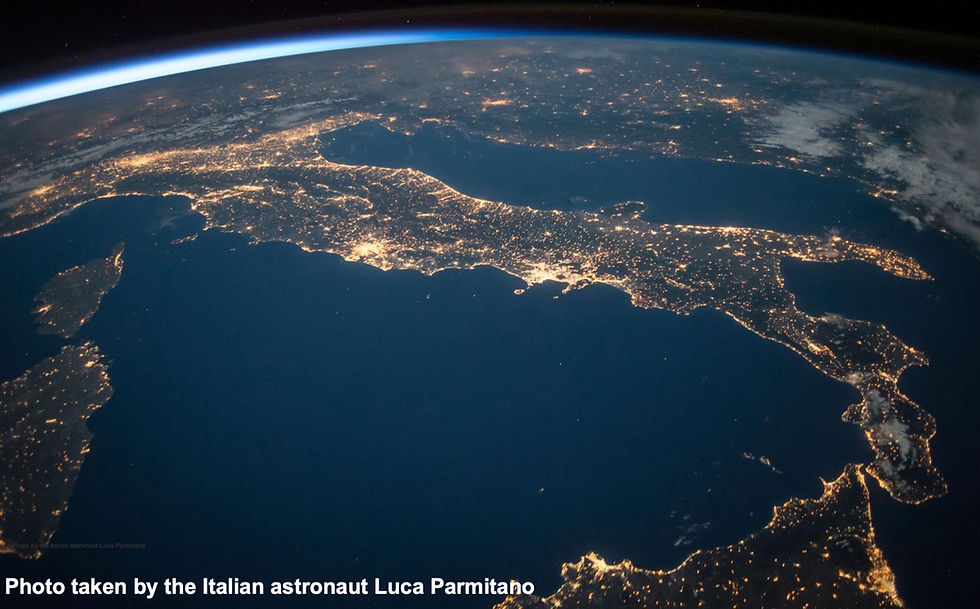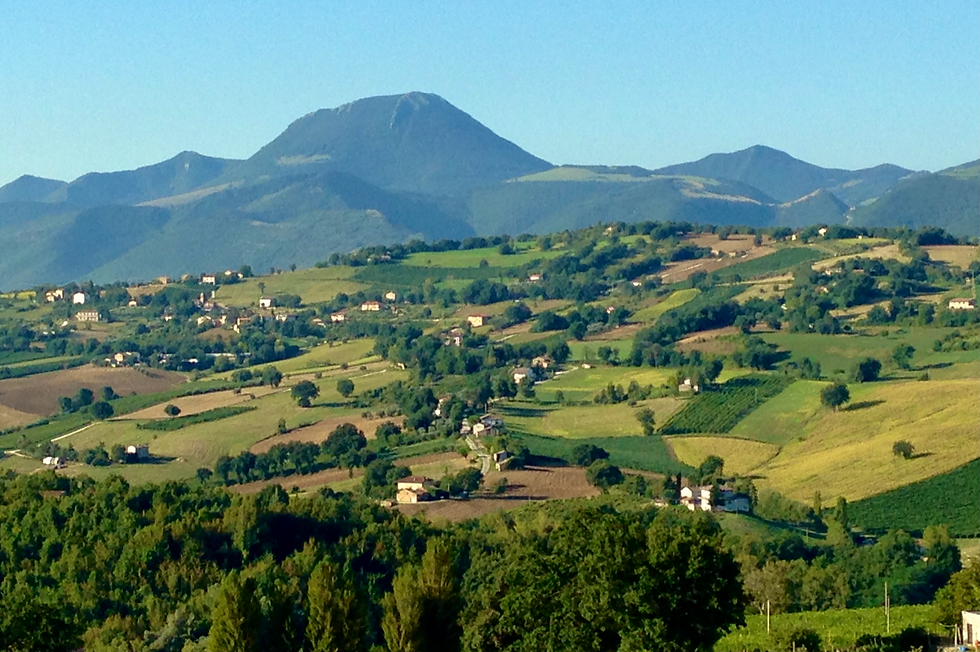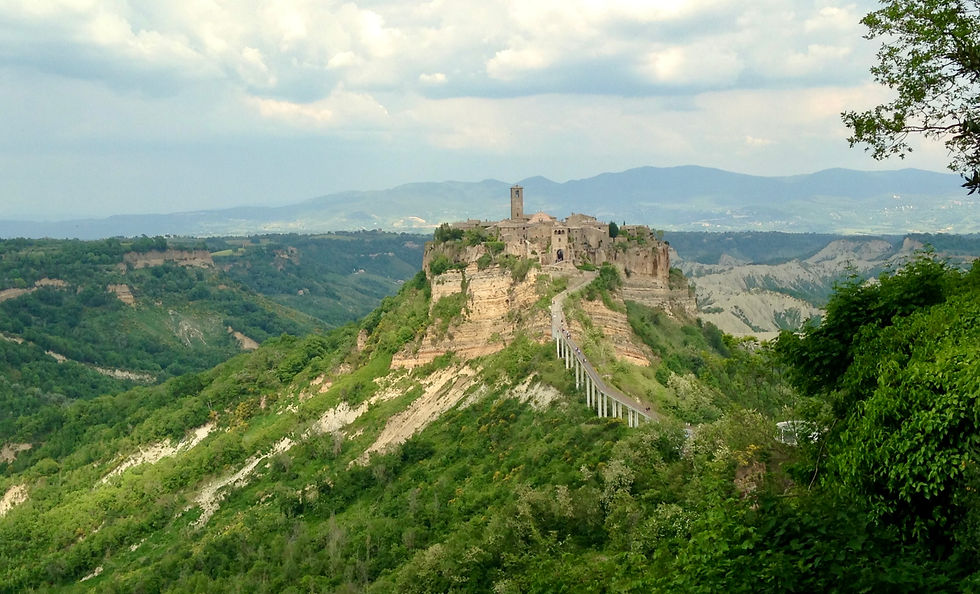When to visit Italy
- Apr 11, 2021
- 7 min read
Updated: Dec 15, 2024
The topic of this article might seem a bit dull but it probably contains some of the most useful advice that we can give you, especially if you have flexibility with your travel plans and would rather experience Italy without crowds.


Most families are obliged to come to Italy in the summer because of the school calendar whereas others will choose the middle of April to the end of June or the period from September to the end of October, specifically to avoid the two peak tourist months. That all makes sense but it still misses a opportunity in our opinion because very few people seem to really understand the climate in Italy.
Most of the blogs on Italian travel are written by foreigners who are only here themselves for the summer months because they are not actually residents of Italy, so they don’t fully understand it either.

We were prompted to write this article after many years of witnessing first hand the tourism patterns in Florence and Lucca, which are very good proxies for just about everywhere in Italy given how popular these towns are as tourist destinations.
Italy is full of small attractive towns in beautiful settings that are swamped by tourists all through the summer months and increasingly not just the peak months of July and August but also the shoulder seasons. Even the bigger cities, including the three most popular, Rome, Venice and Florence, are becoming impossible to enjoy in the summer.
To take Venice as an example, it has anywhere from 20-30 million visitors each year descending on a city of only a few square miles with a permanent population of about 50,000 on the main island, and most of these visitors will be compressed into an eight month period. The center of Florence is almost as bad.
Venice has now built a very sophisticated control center to understand these huge numbers better by feeding off cell phone data. Once Covid is over, everything is up for discussion including turnstiles and an entrance tax. There’s no easy solution to over-tourism for a city unfortunately, but for the individual tourist there are some quite simple solutions.
We all share the inherent contradiction of travel and tourism, which is that you want to visit and enjoy new places but you’d rather experience them without too many other tourists. Not easily done in Italy.
The obvious choice is simply to change your destination and with this in mind we will continue to write about less traveled places to give you some ideas. The other choice would be to come to Italy at another time of year and this is where a discussion of the climate and weather patterns is useful.
We'll go through all twelve months of the year starting with July:
July/August

In these two peak months it can be unpleasantly hot everywhere that’s not at altitude and not particularly comfortable for touring or even walking very far. Italy is extremely crowded and more expensive, and weekend traffic to and from the coast is a nightmare. It will also cost more to fly here, as will the rental car and the hotel room or apartment. Furthermore, expect to find many 7 day minimums at seaside hotels and 4 day minimums at airbnb and other apartments.
In August most Italians are on holiday so the cities are abandoned to the tourists and lots of shops and restaurants in towns are closed. You will see signs saying chiuso per ferie everywhere. If you must come to Italy during these months then get a villa in the country with a pool and near a town that is not too well known or on busy tourist itineraries.
Alternatively, explore some of the inland mountainous areas in Abruzzo and Molise or a little further north in the Sibillini mountain range between le Marche and Umbria.
We generally take our vacations at other times and we often spend our weekends in these months in the mountains above the Casentino valley north-east of Florence, a lovely part of Tuscany but not particularly fashionable so there are no real crowds even in these two peak months.
The above photograph was taken in August at 1,600 feet in the quiet hills near the lovely small town of Cupramontana in the Verdicchio wine area of le Marche.
September/October

Pleasant temperatures and less crowded but still quite busy. Certainly September is still a summer month in most of Italy in terms of weather and is no longer a particularly quiet month. The seaside in the middle of September and sometimes into October is ideal but be aware that the chance of rain rises considerably as you go through these months. In October and often also in September in Liguria for example, you can expect some severe storms which because of the topography invariably cause flooding and mud slides. Genoa for example gets almost 7 inches of rain in October, its wettest month.
Further south in Rome and Naples it's generally better but October can also bring 4 inches of rain in the west whereas the Adriatic coast and the middle of the country tend to be drier. In Umbria and along the eastern coastline from Venice all the way down to Lecce the average October rainfall is no more than 2.5 inches. Tuscany in October is normally one of the best months with lingering fine weather and many fewer tourists. Also Sicily, Sardinia, Puglia and the Italian lakes can be good choices in this period
The above photograph was taken in early October at the Cala Violina beach in the Maremma area of southern Tuscany.
November/December/January

November and December are generally very wet months everywhere. November can sometimes just be endless rain with not much improvement going into December and the dampness everywhere makes it feel much colder than it actually is. Palermo’s two wettest months are December and January and in the Po valley in the north these months are characterized by fog and cold temperatures. Add all of this to the shorter daylight hours in this period and these would really be the three months to avoid Italy if you want to spend a lot of time outdoors.
But if you have museums to visit that are very busy at other times of year then this period would be good for that and even though January can be cold the skies generally start to clear up and it is probably the quietest month everywhere.
December is a nice time to visit Rome and January would perhaps be the best month of the entire year to see Florence and spend time in the Uffizi Gallery.
We don't need to tell you where the above photograph was taken.
February/March
This is where is the question of when to visit Italy gets interesting. The driest 7 months of the year just about everywhere in Italy commence at the beginning of February and there are plenty of clear skies starting in this month. The daytime highs average about 55 degrees in February and close to 60 degrees in March which are fine temperatures for walking around as well as having your morning coffee and lunch outside.
I'm writing this in the second half of February in the middle of a 10 day spell of clear skies and sunny 66 degree days which gives you some idea of the potential of this period. These are perfect months for exploring popular Italian towns and cities that get too crowded in the peak six months.
And February in Italy away from the mountains has often felt no colder to me than June anywhere along the coast of California or Oregon, so this is a month that people should think about seriously because the reward is to see Italy without tourists. And even though this is a covid year I have been here for enough normal Februarys to appreciate how nice it is to see Italy when it briefly belongs to the Italians again.
The centro storico of Lucca is a perfect place to witness this and it becomes a quiet, magical place in February and March. February would also be a great time to visit Venice and by March the south is starting to warm up so Sicily becomes a good option.
In the above photographs the oranges are ripening in Florence in early February and the magnolias are blooming in Lucca in early March.
Update 2024: This year's trip to Veneto ( Asolo, Bassano del Grappa, the Prosecco hills, Treviso, Chioggia and Padua etc) was in the first week of February and for us it was the perfect time to travel around, meeting only locals and enjoying lots of blue skies.
April/May

There are warmer temperatures in these months, something close to ideal if you prefer warm days and cooler evenings but the crowds are also starting to reappear in the popular and obvious places. It’s a trade off between how warm you need your days to be and how many other tourists you can tolerate. Our tolerance for crowds is quite low, so for us if it’s not raining then the temperature is not particularly important. As soon as tourists outnumber Italians we’ve already left. April is another month of somewhat higher rainfall in many parts of Italy but not as bad as November.
These are great months for the Italian countryside and also the seaside if your holiday plans don't require days of beach time and swimming. It's certainly warm enough for everything else. This would be an ideal time for touring through all the interesting towns in Umbria or Puglia before it gets too hot.
Many people will recognize the abandoned town Civita di Bagnoregio in the above photograph which was taken in the first week of May in Lazio, close to the border with Umbria.
June

If the seaside is your thing then June is a good choice because the weather is warm enough for the beach and swimming, and in the first half of June you can generally squeeze in a vacation before families start to arrive from Europe and the US.
The Italians are not on vacation this month but they will definitely crowd the coast at weekends and traffic will start to snarl up a bit on Fridays and Sundays as a result. Over the years we’ve taken a lot of trips in early June including Puglia, Liguria, Sardegna, Umbria, le Marche, Lazio, Piemonte and Campania and none of them were particularly crowded but equally none of them were on popular tourist itineraries.
The above photograph was taken at Grottammare in southern le Marche.
San Martino cathedral in Lucca














